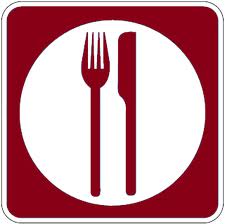When you manage a restaurant, you’ve got to make sure kitchen staff follows safe food handling guidelines. But if you look at statistics about foodborne illness, it’s clear that some kitchens aren’t up to par — between Jan. 1, 2009, and Dec. 31, 2010, of the food poisoning outbreaks traced to a single source, 48 percent were caused by food served in restaurants.
It’s a good idea to hold occasional refresher courses in food safety for employees. Following are some points that should be reiterated once or twice a year.


Many restaurants don’t offer sick pay, so workers — especially those that work for tips — tend to come to work, even when they’re ill. But sick workers can contaminate food and make your customers ill — and even force you to close — if an illness is traced to your establishment.
In 2010, 113 cases of shigellosis — a foodborne digestive illness — were traced to sick workers at a Subway restaurant in Illinois, and the local health department closed the restaurant during its investigation.
Use Utensils
On a hectic Saturday night, when orders are coming in faster than cooks can prepare them, it’s easy to forget about safe food handling. And when busy workers have to wait for a utensil, they’re more likely to use their hands to grab what they need, so make sure you have at least two utensils for items that require them. For example, if you serve potato chips with every sandwich, keep two large hand scoops near chips. Keep two sets of tongs in toppings like sliced onions, tomatoes and lettuce.
Wash Hands, wear Gloves
Keep boxes of plastic gloves in several convenient locations and remind workers to change them frequently — ideally, every two hours. Why? Because the longer you wear gloves, the more likely they are to puncture or tear, creating a pathway for bacteria to travel from hands to food.
Gloves may help prevent food contamination, but workers still need to wash their hands thoroughly. Inside gloves, the environment is warm and humid — ideal breeding ground for bacteria. So workers should wash hands before putting on a new pair of gloves.
Avoid Cross-Contamination
Cross-contamination is another problem that can occur when workers are in a hurry. Utensils used for handling raw meat should never be used on food that’s ready to eat. One way to help prevent cross-contamination is to use utensils of different colors for different purposes — for example, use red-handled utensils only for handling raw meat.
Cutting boards used for raw meat should be disinfected before reuse, and you should have different, dedicated cutting boards for meats and vegetables.
The Take-home Message
Make sure workers understand that you’re not trying to micro-manage them by insisting on safe food-handling. Rather, remind them that a simple oversight in the kitchen can sicken an entire community — along with themselves — and that’s why you all need to share responsibility for clean and safe kitchen habits.